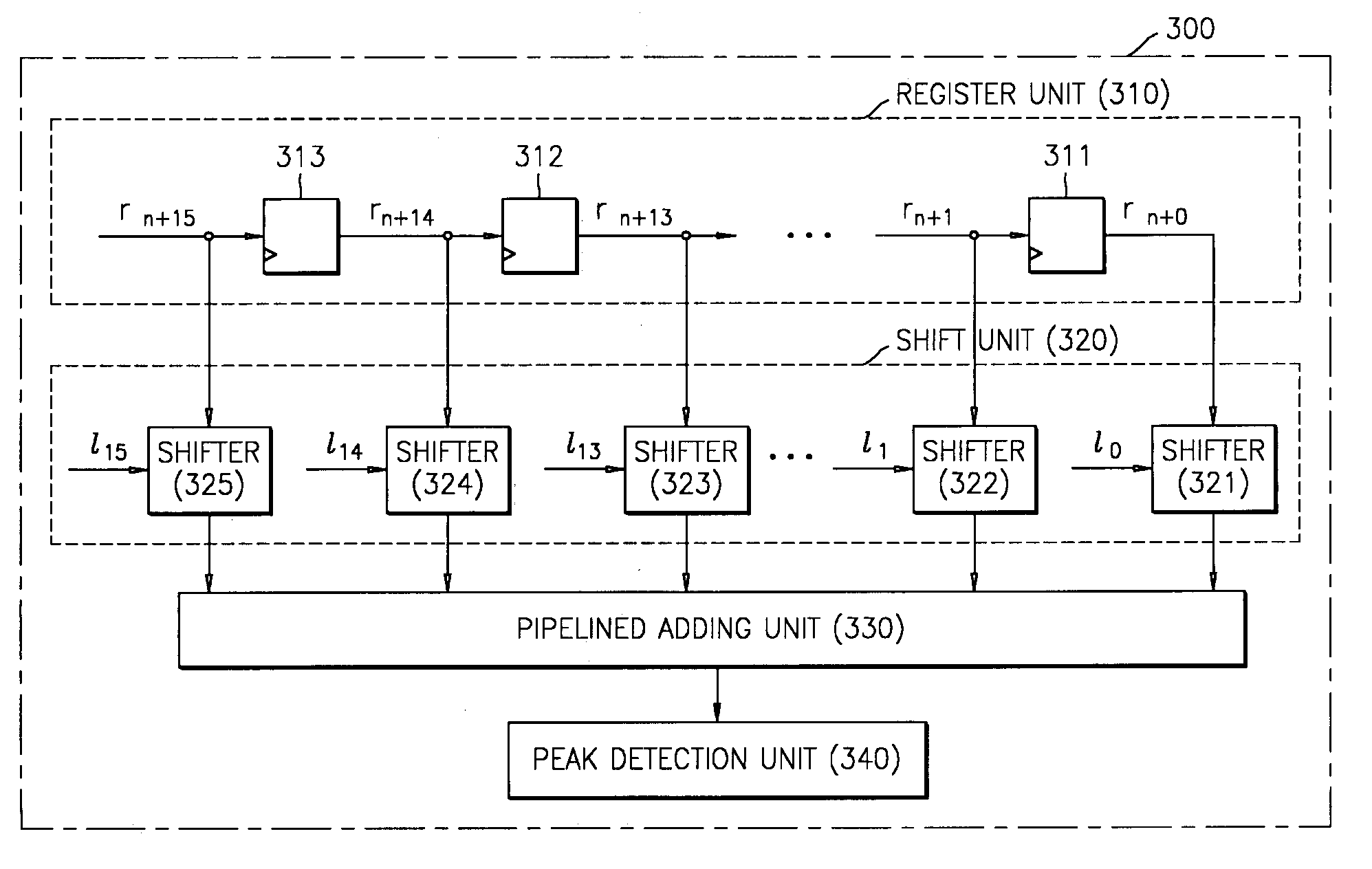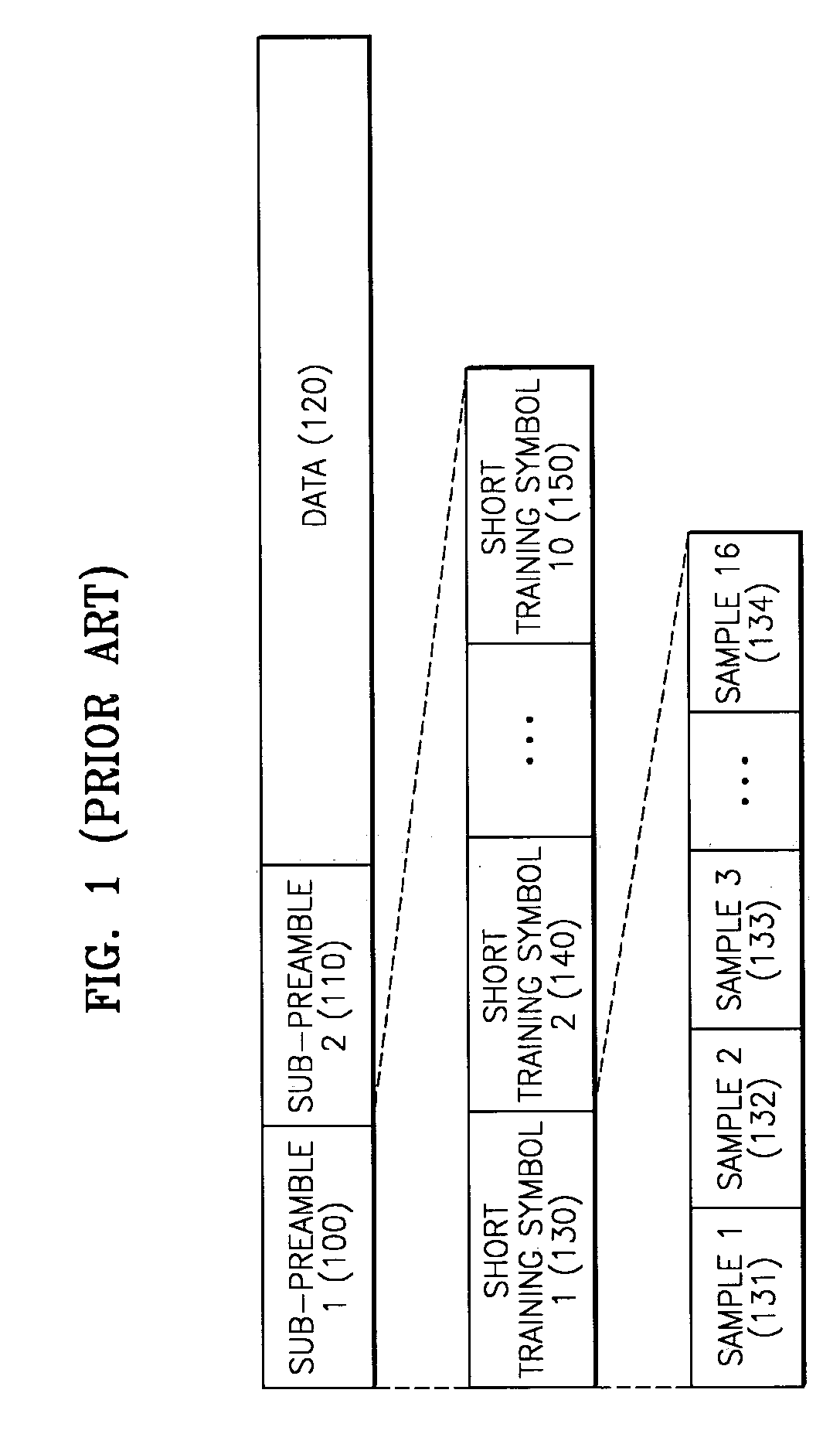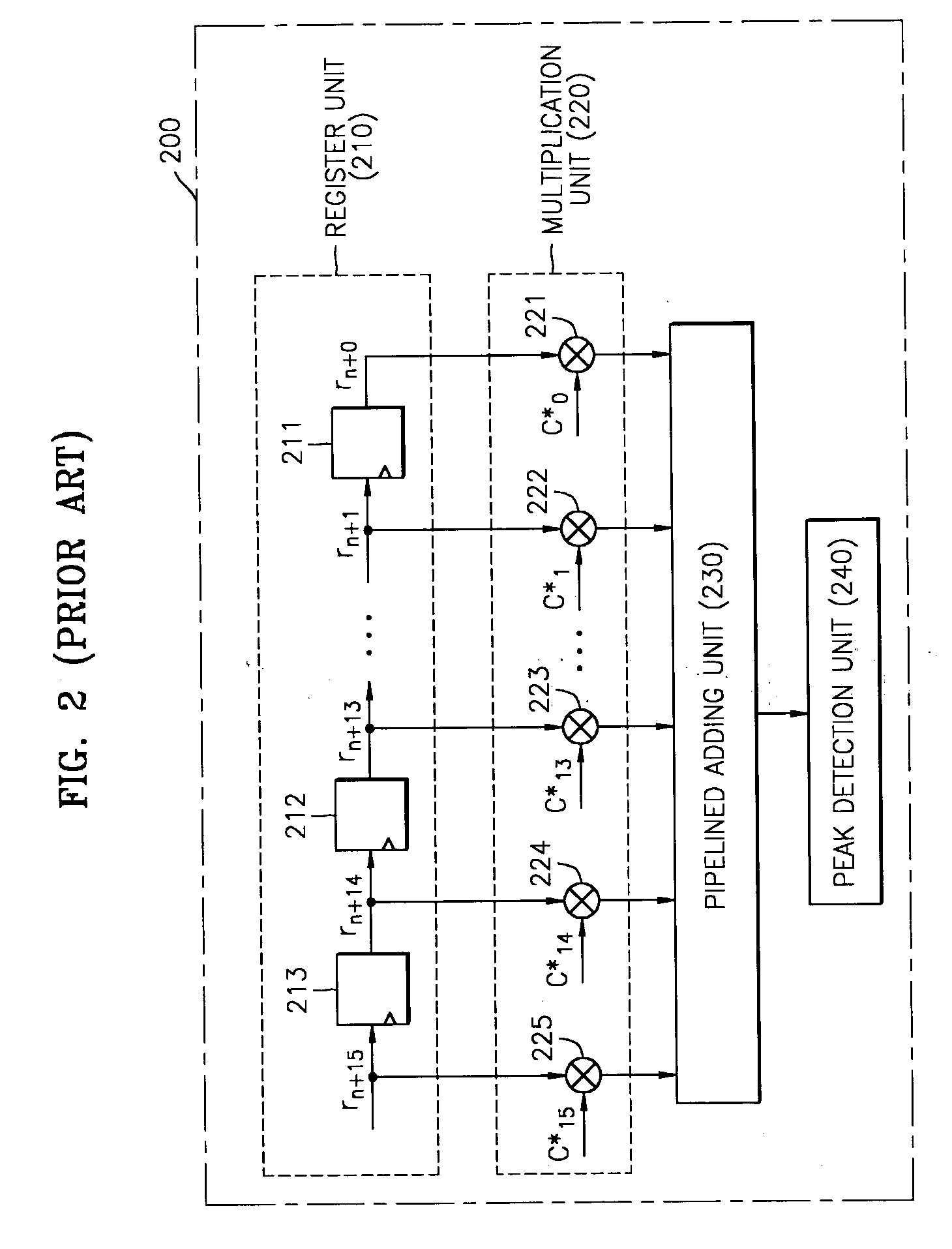OFDM-based timing synchronization detection apparatus and method
a detection apparatus and timing synchronization technology, applied in the direction of orthogonal multiplex, multiplex communication, multi-frequency code system, etc., can solve the problem of hard to develop a high-speed correlator with one multiplier
- Summary
- Abstract
- Description
- Claims
- Application Information
AI Technical Summary
Benefits of technology
Problems solved by technology
Method used
Image
Examples
Embodiment Construction
[0036] Reference will now be made in detail to the embodiments of the present invention, examples of which are illustrated in the accompanying drawings, wherein like reference numerals refer to the like elements throughout. The embodiments are described below to explain the present invention by referring to the figures.
[0037] FIG. 3 is a block diagram illustrating a correlator according to an embodiment of the present invention. Referring to FIG. 3, a correlator 300 includes a register unit 310, a shift unit 320, a pipelined adding unit 330, and a peak detection unit 340. The register unit 310 includes registers that each store one sample of input data. The shift unit 320 shifts each output value of the register unit 310 by as much as the correlation coefficient quantized to a 2level. The pipelined adding unit 330 adds the output values of the shift unit 320. The peak detection unit 340 detects a peak value among output values of the pipelined adding unit 330.
[0038] The register uni...
PUM
 Login to View More
Login to View More Abstract
Description
Claims
Application Information
 Login to View More
Login to View More - R&D
- Intellectual Property
- Life Sciences
- Materials
- Tech Scout
- Unparalleled Data Quality
- Higher Quality Content
- 60% Fewer Hallucinations
Browse by: Latest US Patents, China's latest patents, Technical Efficacy Thesaurus, Application Domain, Technology Topic, Popular Technical Reports.
© 2025 PatSnap. All rights reserved.Legal|Privacy policy|Modern Slavery Act Transparency Statement|Sitemap|About US| Contact US: help@patsnap.com



